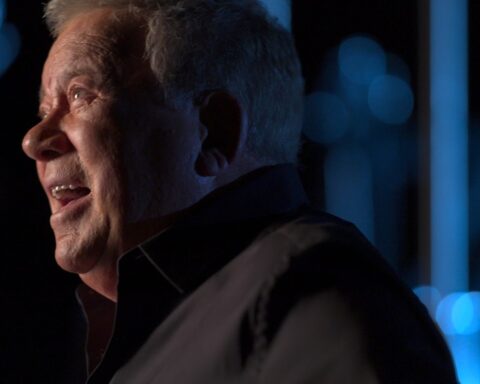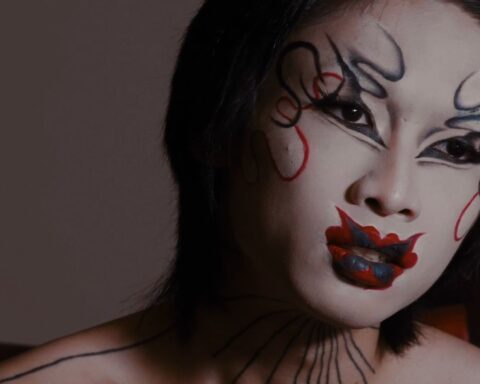Kate Plays Christine
(USA, 112 min.)
Kate, in Robert Greene’s haunted and haunting new film, is actress Kate Lyn Sheil. Christine is Christine Chubbuck, a local TV station reporter who shot herself in the head on air. Greene, who won acclaim for 2014’s Actress, came up with the probably unprecedented idea of filming Kate researching Christine so that she can play her in a movie about her suicide. Ironically, a drama, Christine, has since been made but its star was Rebecca Hall, not Sheil.
Greene’s seamless, compellingly edited, doc begins with Sheil travelling from New York City to Sarasota, Florida. Even before she begins her exploration, we grasp links between her and Chubbuck. Before her death, the journalist was considered a troublemaker who fought for the airing of stories she considered important and resisted what she called “blood and guts TV.” Her suicide during a live news telecast was, as she told viewers, giving them what station management thought, and would still think, they wanted. (Network with its angry critique of TV values would be released two years later.) Kate also feels uneasy about her profession, wondering whether acting is anything more than a sad compulsion to make oneself visible.
As the boundary rattling doc proceeds, Kate really does seem to connect with the character and inhabits Christine in every possible way: physically, emotionally, and spiritually. In drifting images of the actress, she seems lost and troubled. But her emotional state doesn’t stop her from getting to work. Kate starts to resemble a detective or an anthropologist digging into the ruins of Christine’s life. Since she has never heard the dead woman’s voice or seen her in motion, she’s chasing after a vapour. The day Christine shot herself, she asked for the newscast to be recorded—not the norm—but very few people have seen the tape. Although it was never copied, Kate discovers that the original probably still exists.
On her quest, Kate meets up with people who knew Christine. A colleague says that she was “kind of edgy. She looked tough to me.” Her suicide was a waste, someone complains, and a “waste of one good bullet.” The attractively strong-featured Christine felt lonely and was unhappy about a relationship that didn’t happen. A psychologist talks about the impact of long-term depression and the primitive attitude toward it back in 1974. A historian tells the actress that events like Christine’s death evaporate with time. You die “two times,” he says. “You die when you pass away, and then you die the second time the last time somebody mentions your name.”
Kate visits the club where Christine supposedly hung out, contemplating suicide, and she buys a gun in the shop where the reporter purchased hers. The salesman comes across as an amiable guy who points out a safe, simple “beginner” weapon. You just “point and shoot.” There’s a subtle change in him, a tight edge when he finds out Kate’s purpose. Doesn’t sound like good P.R. for happy, healthy gun ownership, not to mention gun laws.
As Kate investigates the dead woman’s life and possible motives, she deliberately merges with Christine. She gets fitted for costumes reflecting outfits that Christine would wear, and tchatchkas she would decorate with. More dramatically, given that the shot was to the back of the head, Kate gets fitted for a wig mimicking Christine’s long tresses. She also needs brown contact lenses because her eyes are blue, and she goes for Florida brown in a tanning salon.
Greene’s through-line takes the viewer from Kate’s prep into her as Christine, sometimes shooting multiple takes. As his film progresses, he intercuts key moments from his imaginary drama with Kate continuing the research for her performance. Actors playing roles in the movie appear as themselves offering their take on the story.
Via the film’s baseline, Greene deals with a mosaic of themes. For instance, the doc is an investigation into suicide, TV’s infatuation with crime and violence, easy access to guns, ambivalence about performance, and the confusion between role and reality. “It’s not easy to come in and out of that,” someone says about what Kate is doing.
Naturally, the film climaxes when Kate must perform the suicide. We see her rehearsing in her wig cap, as a technician hovers over her with a tube for the blood effect. “I feel weird about re-enacting her suicide,” she says, unsure about whether she will be able to go through with it. In a film that blurs so many lines between reality and the imaginary, Kate looks like pretending to be Christine shooting herself might be fatal. Of course, her anxiety might also be a performance.










